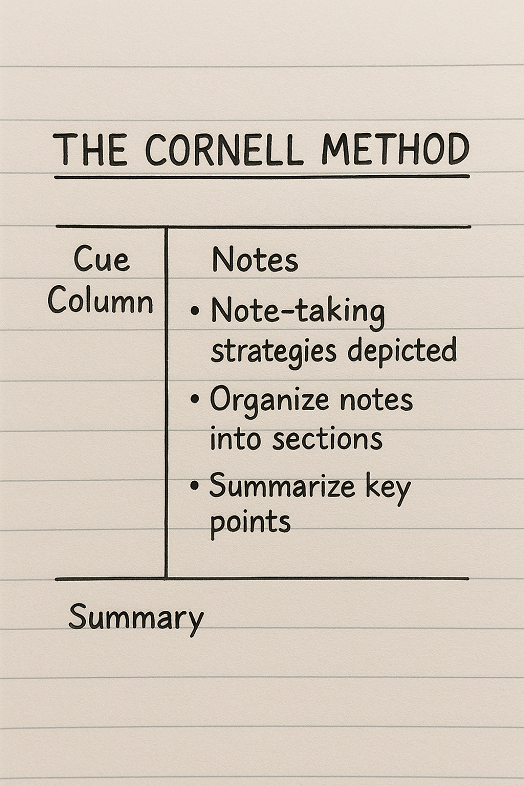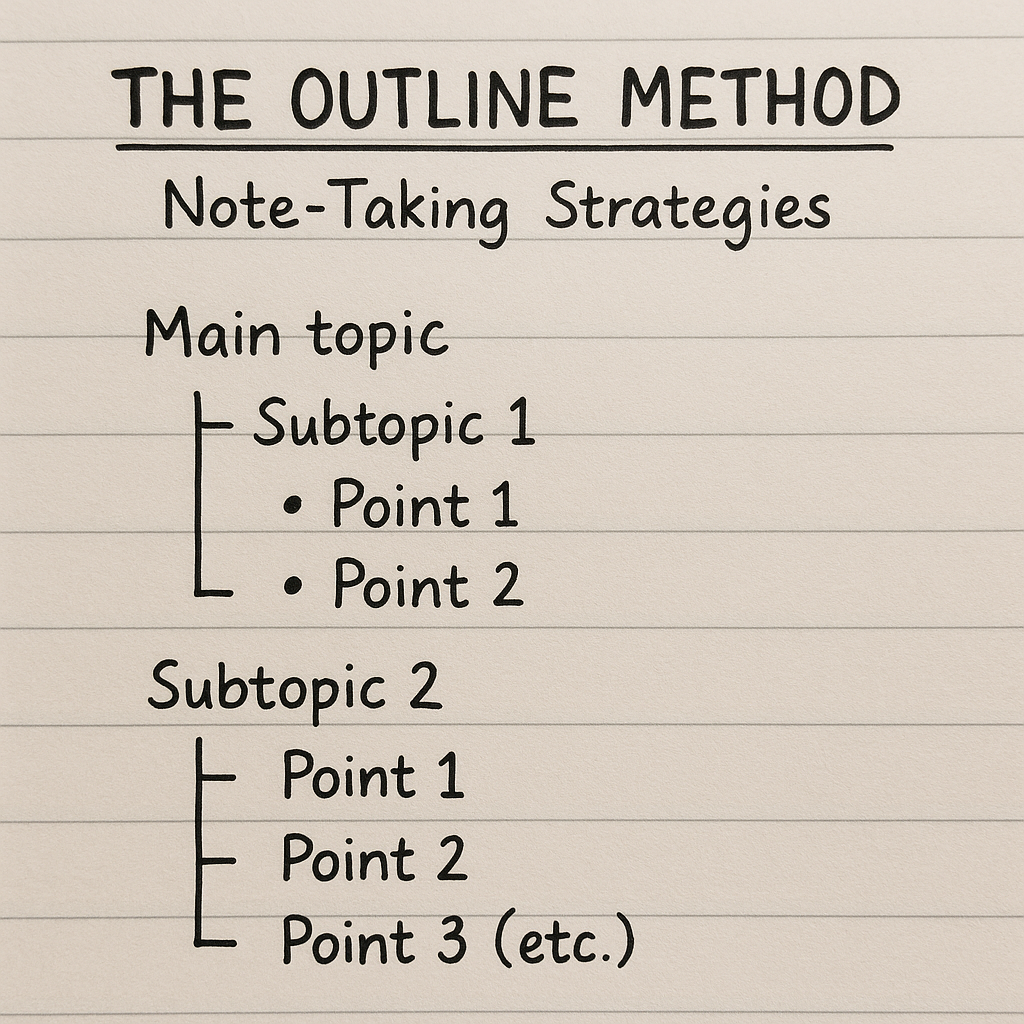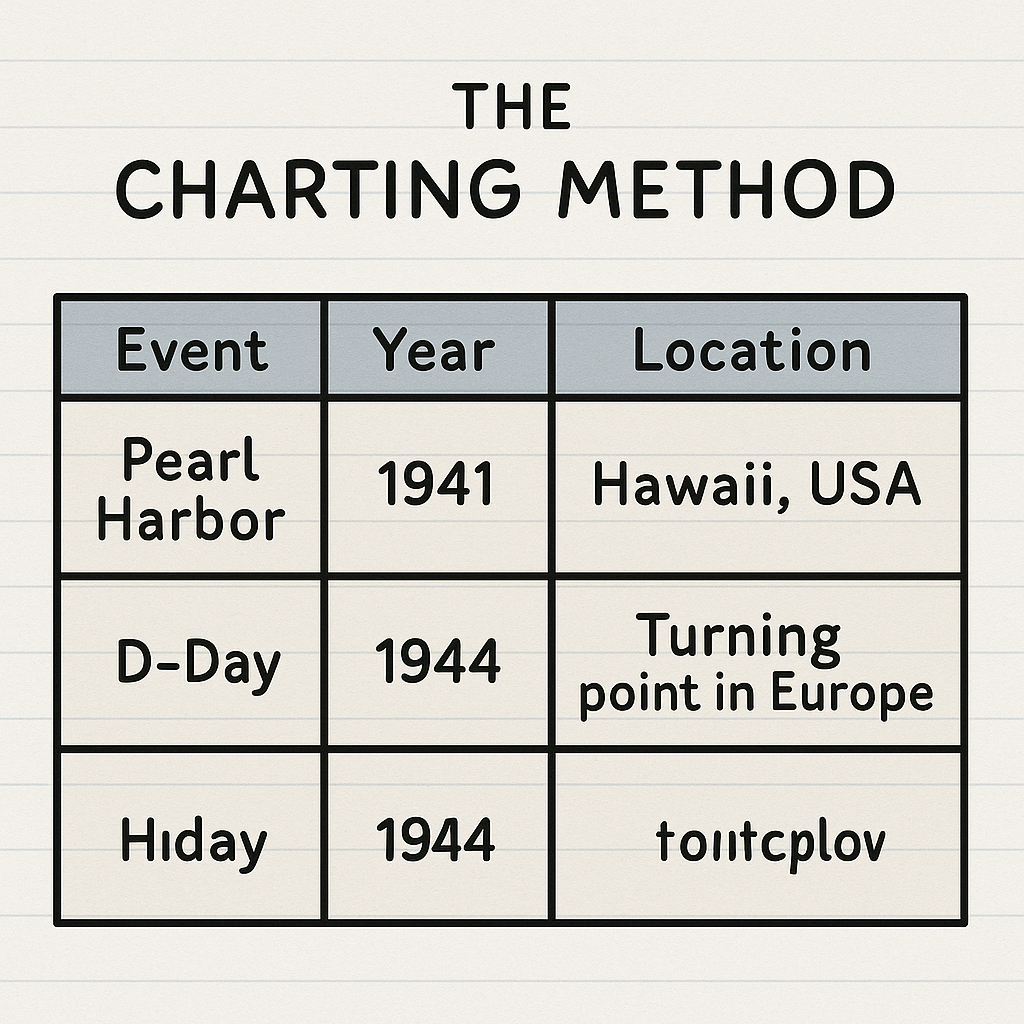Note-taking is one of the most underrated skills in academic and professional life. Whether you’re a student attending lectures, a professional in meetings, or a lifelong learner diving into books or webinars, taking practical notes can dramatically improve your comprehension, retention, and productivity.
But here’s the twist: not all note-taking is created equal. Scribbling every word or copying slides verbatim isn’t enough. The secret lies in using strategic methods that help your brain absorb and organize information efficiently. Let’s break down the best note-taking strategies so you can level up how you learn and retain knowledge.
Purpose of Note-Taking
Before diving into techniques, it’s essential to understand why note-taking is powerful:
-
Improves focus and active listening
-
Boosts memory retention
-
Organizes thoughts for better understanding
-
It serves as a helpful reference later
-
Encourages critical thinking and synthesis
Note-Taking Strategies for Students
Your notes are more than scribbles, whether in a lecture hall, flipping through textbooks, or gearing up for exams. They’re your blueprint for academic success. When done right, note-taking doesn’t just help you remember information; it enables you to understand it, retain it longer, and recall it more easily.
With so much information coming at you daily, choosing the right note-taking strategies can make a difference. Some methods are better for visual learners; others are perfect for structured subjects or fast-paced lectures.
1. The Cornell Method
A structured, review-friendly format perfect for in-depth learning.
How It Works:
The Cornell Method organizes your page into three distinct sections:
-
Cue Column (Left): Jot down keywords, prompts, or questions while taking notes. This column is great for quick reference and later review.
-
Note-Taking Area (Right): Use this space to record detailed notes, definitions, examples, or explanations from your lecture or reading.
-
Summary Section (Bottom): After class, summarize the main ideas in your own words. This recap strengthens understanding and memory retention.

Best For
-
Subjects that require deep analysis and conceptual understanding, like history, biology, and literature
-
Students who revise regularly and benefit from review-driven learning
Why It’s Powerful:
-
Promotes active recall by encouraging you to quiz yourself using the cue column
-
Builds critical thinking as you summarize and organize ideas
-
Ideal for long-term retention and preparing for essay-based exams
Pros
-
Organized Structure
-
Enhances Active Learning
-
Improves Review Efficiency
-
Encourages Reflection
-
Customizable
Cons
-
Time-Consuming Setup
-
Not Ideal for Visual Learners
-
May Interrupt Note Flow
-
Initial Learning Curve
2. The Outline Method
It is simple, logical, and super easy to review.
How It Works:
This method organizes information in a hierarchical structure, using indentation and bullet points to break down main topics and subpoints.
It might look something like this:

Best For:
-
Subjects with a clear logical structure, such as science, law, economics, or philosophy
-
Students who prefer clarity, organization, and easy-to-skim layouts
Why It Works
-
Helps you see the relationship between ideas at a glance
-
Allows for quick reviews and makes summarizing chapters or lectures simple
-
Reduces clutter and improves overall note organization
Pros
-
Logical Organization
-
Saves Time
-
Easy to Review
-
Promotes Active Listening
-
Flexible and Adaptable
Cons
-
Requires Organized Thinking
-
Not Visual
-
Hard to Add Info Later
-
Can Miss Details
3. The Mapping Method (Mind Maps)
Perfect for visual thinkers and creative learners.
How It Works:
The Mapping Method, also known as mind mapping, involves placing a central idea in the middle of the page and branching out with related subtopics using lines or arrows. Use color, symbols, and small drawings to represent ideas and connections.

For example:
Central Topic: Human Memory
-
Types: Short-term, Long-term, Sensory
-
Brain Regions: Hippocampus, Prefrontal Cortex
-
Applications: Studying, Learning, Decision-making
Best For:
-
Brainstorming, essay planning, or concept-heavy subjects
-
Visual subjects like psychology, business, or design
-
Students who enjoy seeing how concepts connect
Why It Works:
-
Encourages visual learning and creativity
-
Helps your brain recognize patterns and associations
-
Excellent for reviewing big-picture ideas and developing critical thinking
Pros
-
Highly Visual
-
Shows Relationships Clearly
-
Encourages Creativity
-
Quick Overview
-
Flexible Format
Cons
-
Can Get Messy
-
Time-Consuming
-
Requires Space
-
Not Great for All Subjects
4. The Charting Method
Your best bet for comparing similar data points side by side.
How It Works:
The Charting Method uses tables or grids to organize information in rows and columns. This format is handy for comparison, timelines, or categorization data.
Best For:
-
Subjects like history, medicine, accounting, or legal studies
-
Any material that involves classifying, comparing, or tracking changes over time
Why It Works:
-
Allows you to compare multiple elements at once
-
Makes memorization easier with structured data
-
Extremely helpful when revising large quantities of factual information quickly
Pros
-
Highly Organized
-
Ideal for Facts and Data
-
Perfect for subjects like history, science, or statistics where you compare a lot of information (e.g., dates, events, definitions).
-
Easy to Scan
-
Reduces Repetition
-
Promotes Active Engagement
Cons
-
Setup Time
-
Inflexible for Unstructured Content
-
Hard to Use Without Headings
-
Can Get Overcrowded
5. The Sentence Method
Quick, raw, and great for fast-paced lectures.
How It Works:
Write each idea or fact as a complete sentence or fragment on a new line. Don’t worry about structure just focus on capturing as much as possible, as fast as possible.

Example:
-
The mitochondria are the powerhouse of the cell.
-
Converts glucose into ATP during cellular respiration.
-
Found in both plant and animal cells.
Best For:
-
Rapid-fire lectures, Q&A sessions, or unfamiliar topics
-
Students who process better by writing everything down first, then organizing later
Why It Works:
-
Ensures you don’t miss important information during class
-
It helps capture the flow of lecture material
-
You can constantly restructure or clean up your notes later
Pros
-
Simple and Fast
-
Great for Fast Lectures
-
Good for Detailed Notes
-
Flexible Format
-
Works for All Subjects
Cons
-
Lacks Organization
-
Takes Up Space
-
Time-Consuming to Review
-
Repetitive Writing
Choosing the Right Strategy for You
There’s no one-size-fits-all approach when it comes to note-taking strategies for students. The key is to select a method based on:
-
The type of content you’re learning
-
The speed and structure of the lecture
-
Your learning style (visual, auditory, reading/writing, or kinesthetic)
Here’s a quick reference guide:
Read on Academic Goals for Good Grades
Conclusion
Choosing the best note-taking method ultimately comes down to your learning style, goals, and the type of material you’re working with. Whether you prefer the structured logic of the Cornell Method, the visual connections of Mind Mapping, the simplicity of Outlining, or the speed of the Boxing and Charting Methods, each offers unique benefits.
Don’t be afraid to experiment and combine techniques to find what works best for you. With the right approach, your notes won’t just record information. They’ll help you actively engage with it, retain it longer, and use it more effectively. So grab your pen (or keyboard) and start taking notes that work for you.









 Evan John
Evan John



